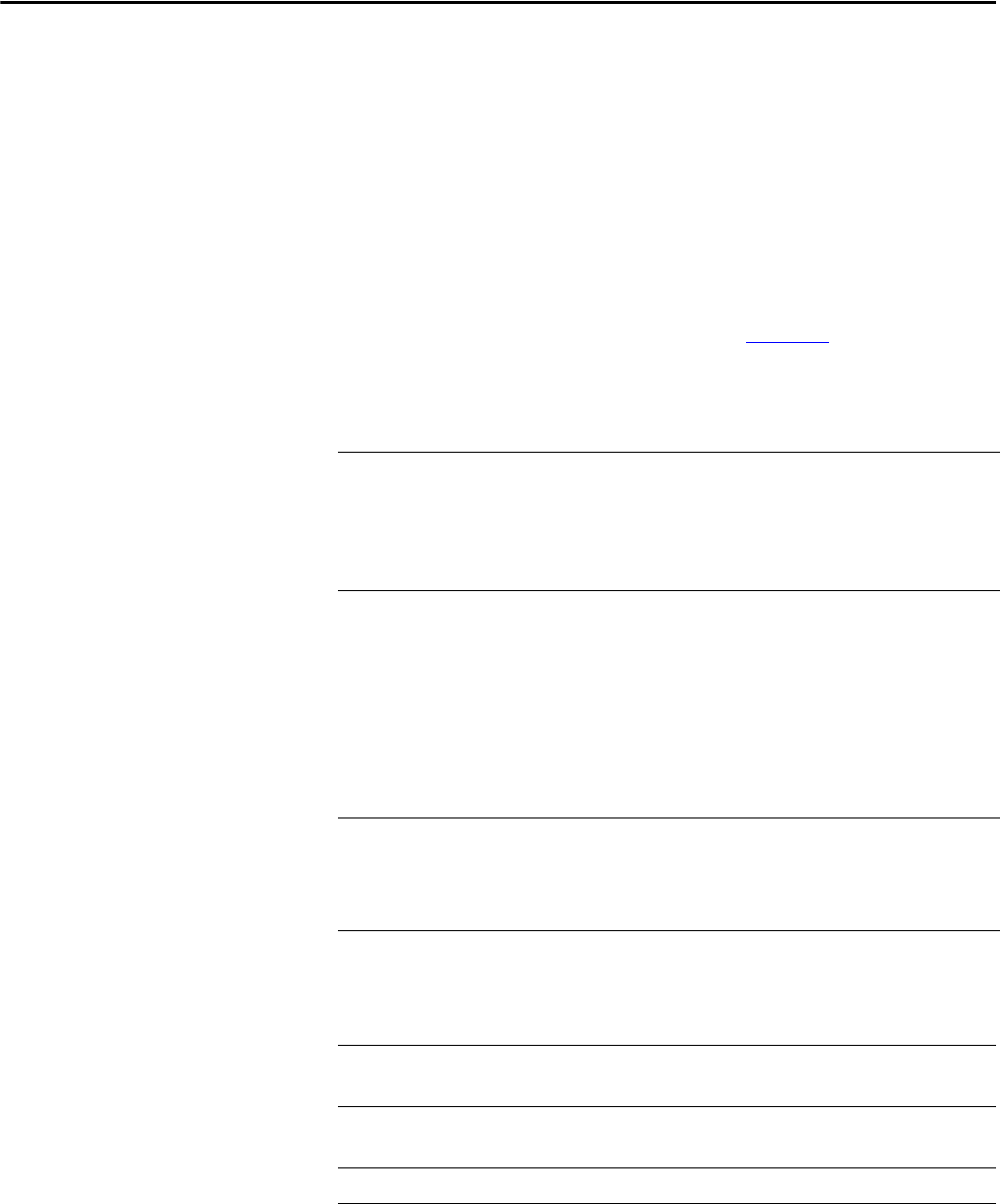Owner's manual
Table Of Contents
- Front Cover
- Important User Information
- Summary of Changes
- Table of Contents
- Introduction
- About the Drive
- Identifying the Drive by Cabinet Assembly ID Number
- LiquiFlo 2.0 Drive Component Locations
- Identifying the Power Module by Model Number
- AC Line I/O Board Description (Frame 3 Only)
- Standard I/O Board Description (Frame 3 Only)
- Combined I/O Board Description (Frame 4 Only)
- DPI Communication Ports
- Optional Equipment
- Planning the Installation
- Mounting The Power Module and Grounding the Drive
- Installing Input and Output Power Wiring
- Completing the Installation
- Using the Start-up Routines
- Programming Basics
- Parameter Descriptions
- Troubleshooting the Drive
- Verify that the DC Bus Capacitors are Discharged Before Servicing the Drive
- Determining Drive Status Using the Status LEDs
- About Alarms
- About Faults
- Diagnostic Parameters
- Common Symptoms and Corrective Actions
- Replacement Parts
- Board Replacement, Firmware Setup Procedures
- Troubleshooting the Drive Using the OIM
- Checking the Power Modules with Input Power Off
- Technical Specifications
- Using the OIM
- Installing and Removing the OIM
- Display Description
- OIM Menu Structure
- Powering Up and Adjusting the OIM
- Selecting a Device in the System
- Using the OIM to Program the Drive
- Monitoring the Drive Using the Process Display Screen on the OIM
- Displaying and Changing the OIM Reference
- Customizing the Process Display Screen
- Customizing the Function Keys
- Controlling the Drive From the OIM
- LiquiFlo 2.0 Drive Frame 3 Wiring Diagrams
- LiquiFlo 2.0 Drive Frame 4 Wiring Diagrams
- Index
- Back Cover

Rockwell Automation Publication D2-3518-3 - May 2013 55
Chapter 8
Programming Basics
To program the drive for a specific application, you adjust the appropriate
parameters. The parameters are used to define characteristics of the drive.
This chapter provides an overview of parameter types and how they are
organized. Parameter descriptions are provided in Chapter 9
.
About Parameters
There are three types of parameters:
Parameters are also either configurable, tunable, or read-only:
Numbered List
Parameters
Numbered list parameters allow a selection from
two or more options. The OIM displays a text
message for each item.
Example: inverter Speed Ref A Sel (90)
Bit Parameters
Bit parameters have individual bits associated with
features or conditions:
• If the bit is 0, the feature is off or the
condition is false.
• If the bit is 1, the feature is on or the
condition is true.
Example: inverter Drive Status 1 (209)
Numeric Parameters These parameters have a single numerical value
(for example, 0.1 V).
Example: inverter Maximum Freq (55)
Configurable Parameters Can be adjusted or changed only while the drive is
stopped.
Tunable Param eters Can be adjusted or changed while the drive is
running or stopped.
Read-only Parameters Cannot be adjusted.










